Top 7 Issues for an Electric Car Conversion
Yank out the engine. Install a motor, converter, and batteries. And off you go in your electric car.
But wait. There are issues to consider. (Photo by:Sergey Ryzhov / Shutterstock.com)
Consumers eager to get behind the wheel of an electric car have experienced crushing disappointment for many years. But now, they may finally have their chance. Major auto companies—like Ford, Chevy and Nissan—plan to roll out the next generation of practical, affordable plug-in cars in 2011 or 2012. Niche players like Tesla, Fisker, and Miles are also hitting the market.
But what if you can’t wait two or three years for an EV? Or if you don’t have deep enough pockets for a Tesla? What if you don’t believe car companies’ press releases? There’s an answer for those skeptics and impatient souls: An electric car conversion. But be prepared for major compromises to test the limits of your skepticism and impatience.
A Test of Patience
“It all depends on how eager you are,” said Steve Lough, president of the Seattle Electric Vehicle Association. In fact, Lough—who has been active in promoting electric cars for almost 30 years—is anguishing over the decision to convert now or wait it out. Fellow Seattle EV association members are encouraging Lough to convert his first-generation Honda Insight into an all-electric car, but he’s got his heart set on the new Nissan EV scheduled for release in 2011.
“Quite frankly, I’m on the fence. Do I spend $25,000 on a used converted Honda or $30,000 on a new Nissan?” pondered Lough in an interview. As the previous owner of five electric vehicles, Lough is well aware of the tradeoffs when it comes to driving range, warranties, battery replacements, and safety issues. “It all comes down to the urgency. Conversions can work and be less expensive than a new car, but it’s not a new car.”
Mark Hazen, of Florida-based EVHelp.com, also has his eyes wide open regarding the pros and cons of electric car conversions. His website provides extensive reference material and hands-on guidelines for backyard tinkerers doing EV conversions. “I am an EV advocate, but I’m also realist,” he said. “I’m not one of the EV advocates that will snow you, and talk only about all the wonderful things about it. I’m also going to tell you the negative things, and let you make an intelligent decision for yourself.” Hazen believes that some people will go forward—even after knowing about the extra costs and drawbacks—mostly motivated by a desire to be green, and for the sheer joy of driving a silent gas-free electric car that draws attention and admiration from friends and passers-by.
Cost is a major factor, according to Mike Moore, who runs South Carolina-based Ampmobile Conversions, with his wife Paula. The husband and wife team converts five or six vehicles per year for its customers. “The Chevy Volt is going to cost about $40,000, but a conversion costs about $15,000,” said Moore. “Until the car companies can get the prices under control, people will want conversions. It’s going to be like that for quite a while.” Moore sees dramatic interest in conversions from all across the country. His customer list includes people from Texas to New Jersey.
After speaking with Lough, Hazen and Moore, we identified these 7 key issues in your decision-making process.
1Choose A Donor Car
To state the obvious, you’ll need a donor car to use as the basis for your conversion. The gasoline engine will be entirely removed and replaced with a motor, controller, and lots of batteries. Nearly any four-cylinder manual transmission vehicle can work, but you’ll probably want to use a model that others have converted many times before. In this way, your electric wheels won’t need to re-invented. Moore recommends using an affordable compact car, like a Chevy Aveo, Geo Metro, or Honda Civic, if economics and efficiency are your top concern. If you are trying to maximize driving range, go with a small pickup that has room for all the batteries. A Chevy S10 or Ford Ranger are common choices.
If you have your heart set on your exotic electric dream car, nearly any car can work. But each level of complexity and uniqueness requires more time and consideration—and therefore probably adds cost. It’s not impossible to do a conversion from an automatic transmission,” said Hazen. “It just wastes energy and is not practical.”
The extensive database of electric cars—mostly conversions—at EValbum.com can serve as an informal shopping guide. The site is searchable by make, model, components, and location. Each entry provides the basics of how the vehicle was converted.
2Calculate Costs
The cost of doing an electric car conversion (DC system) on your own, according to our three experts, is between $8,000 and $11,000—not including the donor car. If you hire a company to do the conversion, expect to spend in the range of $12,000 and $18,000, including all the necessary parts and labor. There are reports of electric car conversion as high as $25,000, but anything above $20,000 is price gouging.
It’s hard to get more specific about costs, because there’s a broad range of issues to consider: the specific vehicle being converted, the quantity and technology of the batteries, the drive system, and the quality of the work and rates charged by the conversion company.
Moore said there’s virtually no maintenance, especially if you make sure that cables are tight and secure. Lough said the electricity costs are only about $100 to $200 per year, although Hazen warns that the common figure of $0.02 per mile is overused and exaggerated, and that after all utility costs and efficiencies are considered, the price per mile is closer to $0.05 to $0.07.
The only “gotcha” is the cost of replacing the car’s battery pack. Today’s electric car conversions, almost without exception, use lead-acid batteries, which will last approximately two to five years. The cost to replace the pack, depending on the number of batteries, will range between $2,000 and $5,000.
3Make Technology Decisions: Batteries and Electric System
Despite all the buzz about lithium-ion batteries, and the proven success of nickel-metal hydride in today’s hybrid gas-electric cars, you should expect your converted EV to run on lead-acid batteries. It’s simply too hard to find reliable and affordable lithium or nickel batteries. Moore has tested lithium-ion batteries, loves how they react, but can’t promise that they will last long enough to make them cost-effective at this time. In terms of various lead-acid batteries, the group strongly recommends Absorbed Glass Mat (AGM) batteries over flooded cell, which require monitoring and maintenance.
With lead-acid batteries, expect overnight charging times of approximately six to eight hours.
Given the limited energy and power of lead-acid batteries, and rudimentary or non-existent battery management systems, a DC system is recommended. An AC system, which requires an inverter-controller (and provides the capacity for regenerative braking), will add as much as $5,000 more to the conversion—and is therefore considered too costly for the benefits. Although Moore thinks it’s more strictly a matter of cost. He believes going from DC to AC is like going from a six-cylinder to an eight-cylinder gas car. “If you have the money,” he said, “I believe the AC system is the best bet because of its advantages.” Faster performance and the ability for regenerative braking are the chief advantages of an AC system.
4Consider Major Technical Hurdle: Battery Weight
An example of the information you can find on EVAlbum.com: Mike Casey of Mountain View, Cal. converted his 1991 Geo Metro into Bluie,” an electric car. He writes, “This car is very fun to drive and very reliable. People are amazed when I give them a test drive.” Casey drives in third gear from about 0 to 60 mph, and says that Bluie will burn rubber in first gear and reverse. Casey installed a new bank of batteries after his old set of “Marine SMR 31s” died after only 1,000 miles. The seven new batteries (right) are bolted down with a metal rod, and then tucked away under a cover and the back seat.
“There are no technical challenges whatsoever on the motors, controllers and chargers,” said Lough. “It’s all been perfected 20 years ago.” Perhaps the biggest technical challenge is finding a place for a thousand or more pounds of batteries. “The hardest part is figuring out where to move the weight around the car. We remove a lot of weight by taking the engine out,” said Moore. “You have to put some in the front and some in the back to get it as close to the original as possible, so it will drive right.” He warns that putting too much weight in the rear, and the front “is going to go all over the place.” Put too much in the back and it’ll be hard to steer.
5Confront Limited Range & Speed
The limited range of converted electric cars remains a major issue. Steve Lough is very upfront with perspective EV owners who will accept nothing less than 50 or 60 miles of range. “I tell them, ‘I don’t think this is going to work for you.’” While the driving range between charges can be as high as 50 miles, Hazen make it clear that you don’t want to run your batteries all the way down to zero state of charge. That will significantly decrease the life of your batteries, and besides, it’s scary to not know if you are going to make it back home. In driving in Central Florida, Hazen says, “Lead acid batteries will take you down the freeway maybe one exit, and then you have to find a place to get off and charge up.”
So, while converted EVs are commonly capable of 65 to 70 mph, driving at that speed will quickly drain your batteries. “It takes a lot of energy to run at that speed,” Hazen said. “Lead acid is really not for freeway use. But for around town, on streets at 40 mph, you can go a long way. That’s where the longer range numbers come in.”
6Shop for Conversion Companies
If you are sold on the economic, environmental, and energy benefits of an electric car conversion, but don’t want to get your hands dirty, there are dozens of companies across the country that will do the work for you. But how do you find a good one? Steve Lough recommends going through your friendly local electric auto association. In one fell swoop, you’ll get advice and referrals from dozens of local folks who have already been through the process.
Beyond that, common sense prevails. Check the background of the company owners, and get a long list of previous customers. Then call them, and try to arrange a time to see—and ride in—their work. Hazen suggests that you determine “if the work is neat, clean, and well thought-out.” Moore adds, “Don’t be afraid to check references and do research. With the Internet, it’s easy to see if a company has complaints.”
7Pass Up on Conversion Kits
The most common advertisement on the web is for “electric car conversion kits.” But our three experts agree that the kits will only get you so far. The panel agrees that no kit is complete and comprehensive. Even if you buy a kit designed for a specific vehicle, there are likely to be a number of small components and pieces that you’ll need to get on your own. Moore said, “I like to call it a component package—not a step by step set of instructions with everything you need. Most do not include batteries or chargers.” He also warns to be suspicious of the driving range and max speed that many kit providers promise. Hazen, a do-it-yourselfer, thinks it’s a lot cheaper to buy the components yourself. Basically, you are paying somebody a big premium to assemble the basic components into one package. Of course, if you are using a conversion company, a kit won’t help you.
As you can see, with a little commitment and a fair amount of cash, an electric car could be in your immediate future. Do not pass go. Do not collect $200. Go directly to emissions- and petroleum-free EV.
Become an AutoGuide insider. Get the latest from the automotive world first by subscribing to our newsletter here.
More by AutoGuide.com Staff






















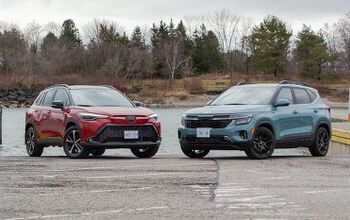
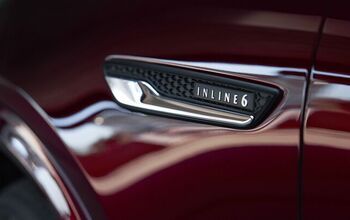
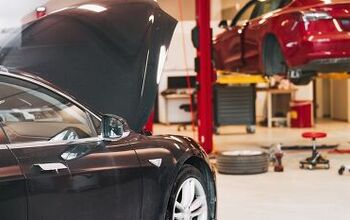


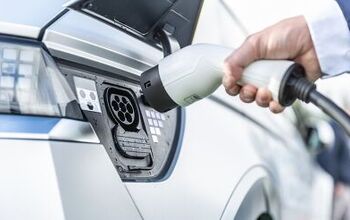


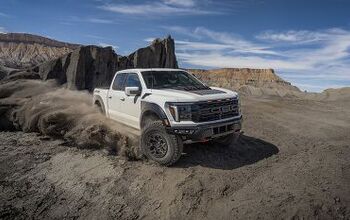


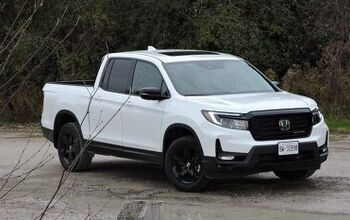

Comments
Join the conversation
Looking to go EV on my 1953 Kaiser Golden Dragon (50,000 miles) in the Arizona 5 state area. Thank you J.D. Bell
I wanted to go EV with my 1982 Chevy Chevette. Its a fun little car to drive. It only has 64,000 miles on car, I thought it would be a good car to use ! Hope you can. Gerald Kensil